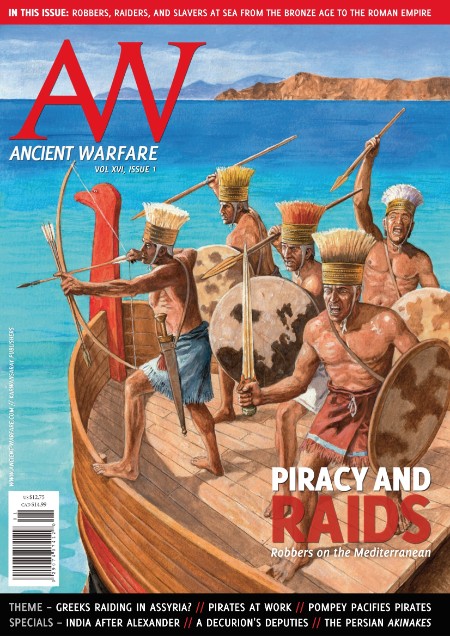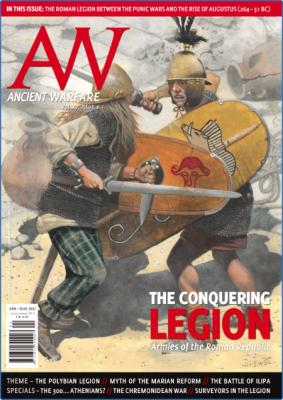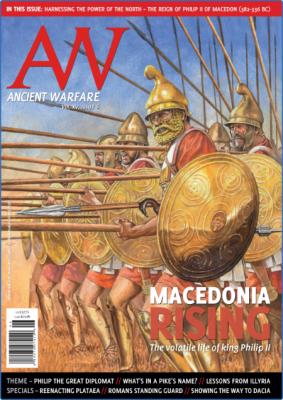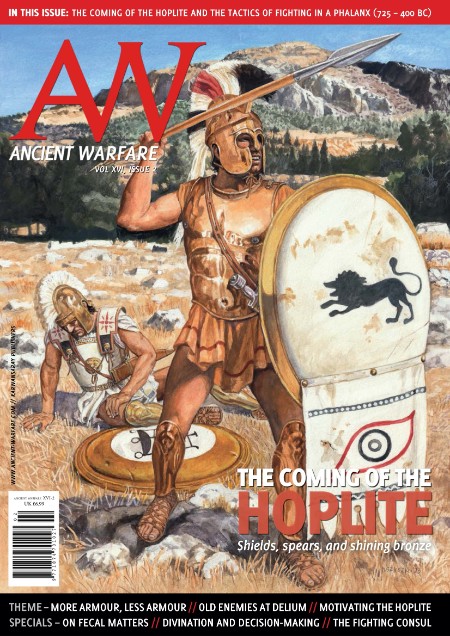
TTC - War and World History 2022
Posted on 09 Aug 09:46 | by rai10 | 32 views

TTC - War and World History 2022
Size: 9.01 GB Type: eLearning Year: 2022 Version: 2022
Description
For thousands of years, military engagements between opposing nations and societies have had important effects on all aspects of human civilization. While the most direct and recognizable impacts of war are the victories and defeats that shape the course of history, warfare also affects human culture in ways that are not always appreciated or understood.
Surprising as it may seem, war often creates as well as destroys. As the most complex of all human endeavors, warfare—from ancient to modern—has spurred the growth of essential new technologies; demanded the adoption of complex economic systems; shaped the ideology and culture of nations; promoted developments in art and literature; and spread faith across the globe.
Consider, for example, just a few intriguing facts about the important role of warfare in human history:
The banking and credit systems that are mainstays of our culture developed as a specific response to the needs of war.
Although wars often appear to emerge from conflict within political systems, in many cases— such as the Ottoman Empire and the European nation-states—the political systems themselves emerged from the activity of war.
The New England colonies in the United States would probably never have survived economically if it were not for huge profits from piracy and privateering.
Here, then, is a highly provocative encounter with history. In War and World History, celebrated military historian and Professor Jonathan P. Roth of San José State University offers you a fresh and challenging insight into human societies through a deep look at the effects and roles of war.
These 48 lectures take you on an exploration of humanity's interface with armed conflict across five continents. But this is far from a traditional approach to military events. This panoramic series is not the history of battles or military campaigns, but the story of the intimate interconnections of war with human cultures and societies and how these connections have shaped history.
As a penetrating view of the many contexts and meanings of warfare, War and World History is for anyone interested in understanding the evolution of our civilization, past and present.
The Global Terrain of Human Conflict
Huge in scope and fascinating in its details, War and World History explores the complex effects of culture, economics, politics, and religion on war—and war's influences on them. In this context, you chart the colorful history of the practice and methodology of warfare.
As your guide, Professor Roth is unusually well qualified to present a broad-minded view of these events. A war protester in his youth, he later served for six years in the New York Army National Guard, then became an acclaimed scholar of warfare. With his richly informed perspective, the lectures unfold as an enthralling inquiry into the nature of organized conflicts.
In probing the links between evolving human cultures and warmaking, the course reveals the ways in which the fate of civilizations is determined by the fate of military events.
But there's another core feature of the lectures: Seen through the lens of armed struggle, this is world history itself at its most vivid and compelling. You witness the dramatic rise of organized societies, economic systems, empires, and nations, as well as world-shaping creeds, ideologies, cultural forms, and developing conceptions of religion, citizenship, and social identity.
Professor Roth makes the great scope of the material directly understandable by focusing the lectures around the core themes of economics, politics, religion, and social culture in their relation to warfare.
War Pays Its Way
In the 8th century B.C. the Phoenicians—famous as traders—staked out maritime colonies across the Mediterranean. Their goal: vast profit from silver, slaves, and other commodities. But this trade came about through warfare and was pursued in support of warfare. Backed by the first warships designed specifically to fight other ships, the Phoenicians' trade in silver funded the armies of the Assyrian Empire.
This deep interweaving of warfare with economies forms a theme you investigate across the arc of history. In selected lectures you learn
how the cost of a single medieval castle consumed as much as a third of a kingdom's entire revenue;
how bitter conflict over war budgets led to the signing of the Magna Carta in 1215;
how Renaissance credit and banking empires arose in response to the financial strains of war;
how the victory of liberal democracies over totalitarian regimes in the 20th century was due to successful management of capitalist economies.
The "Anatomy" of Warfare
Throughout War and World History, the lectures highlight the vital methodology and organization of war and the military cultures that grew from them.
You trace the fortunes of the chariot in the Bronze Age as it spread across the Asian core, revolutionizing battle and spurring the "chariot nobility," as nobles were granted lands and incentives to produce chariots for royal armies.
In classical Greece, hoplite soldiers rejected the aristocratic tradition of individual combat, facing the enemy as a phalanx in a wall of shields. You learn how this practice bred an ideology of equality and how the hoplite system had political features that remain important today.
Among many "engagements" with military methodology, you study the momentous rise of the regiment and the vast 18th-century European naval system. And you consider the factors that allowed Spanish forces numbering in the hundreds of men to defeat Aztec armies of tens of thousands.
World-Conquering Empires, Nation-States, and Ideologies
At the heart of the series, you explore the political contexts of war over three millennia, as societies, empires, and political systems flourished or fell by military means.
You trace the role of militaries in the great empires, from Rome's profit-based warmaking to the gunpowder conquests of the Safavid Persians to the global reach of Europe's colonial powers.
You study the feudal system, west and east, in the Middle Ages and the power structures of lords, vassals, and armored horsemen.
You explore the 17th-century European nation-state, where militaries were "nationalized" into central governments and military service was imbued with ideology of citizenship and loyalty to state.
You define the crucial military underpinnings of nationalism, Communism, and Fascism in the modern era.
War and the Gods
The interface of warfare with religion breeds some of the most unusual and poignant of history's conflicts.
In the early societies, you see how the Assyrians delivered military reports to the temples of the god Assur, on whose behalf they waged war, and how the Achaemenid Persians conceived of the earth as a spiritual battlefield, with two supreme beings locked in a violent struggle of good versus evil.
You follow religious conquests from Asia to the New World, as Christianity, Islam, Hinduism, and even Buddhism spread through military force. You probe the Christian and Muslim ideologies of holy war, the bloody Sunni-Shi'a split within Islam, and the Catholic wars against the pagans, the Byzantine orthodoxy, and the Protestants.
Here you find some of the most jarring details of humanity's propensity for violence. You encounter the Hindu justification for killing in war—that war itself is an illusion—and the Christian "paramilitary" monks who attacked pagan temples and carried out assassinations.
The Colorful Instruments of Conflict
The history of warfare reads as a dynamic, overlapping series of technological inventions, as weapons systems arose and mutated, changing military practice and reaching across cultures.
Central to this theme, you trace the history-making military revolutions, including those of the bow, the horse, the sword, and gunpowder. You follow the two separate gunpowder revolutions; first in China, where the technology originates, and second in western Europe, where the practice of "corning" gunpowder vastly increased its power, transforming warfare worldwide.
You mark the great changes in weaponry brought by the Industrial Revolution, as advances in firearms, explosives, and shipbuilding galvanized arms industries. And you see how these factors led to the global military dominance of the European powers.
War's Deep Imprints in Social Life and Culture
Throughout the course, you delve into the fascinating ways in which war shapes social culture—and social culture shapes wars.
In ancient Greece, you enter the symposia—rich banquets where young aristocrats trained for war through songs, poems, and ritual drinking. You learn the uncommon role of gender on the Asian steppes, where women rose as distinguished warriors and were buried with their weapons.
In the feudal era, you study the codes of courtly conduct, chivalry, and honor of the European, Muslim, and Asian cultures.
You consider the Renaissance intellectual revolutions in science, philology, and humanist philosophy, and you see how these were profoundly influenced by thinking about war, and how, in turn, they changed military theory forever.
And you see key imprints of war through the centuries in the relations of class and race and in the literature of heroes, history writing, and art.
The lectures pulsate with intriguing facts and anecdotes that bring the material vibrantly to life. You learn the origin of chess pieces in the divisions of the Indian army, and the military source of the legend of the Amazons. You learn of the military work of Leonardo da Vinci and the war-making role of early Catholicism, as Pope Julius II, in full armor, led an army against Venice.
From first to last, Professor Roth presents the epic story of armed struggle in a way that is both graspable and deeply insightful. Clearly delineating the underpinnings of economics, politics, religion, and culture in their embrace with warfare, he knits together the history-making processes and events that gave us the world we know today.
In the global landscape of human societies, War and World History defines patterns and currents of civilization that are critical to our thinking about humanity's past, present, and future. Probe these pivotal and revealing features of history and deepen your understanding of our extraordinary, evolving world.
About Your Professor
Dr. Jonathan P. Roth is Professor of History at San José State University. He received his B.A. in Ancient Near Eastern History and Archaeology from the University of California, Berkeley, and his M.A. and Ph.D. from Columbia University. He has taught at Tulane University in New Orleans, New York University, and the University of California, Berkeley.
Professor Roth has researched, written, and lectured extensively on ancient warfare and warfare in world history. He founded and serves as the Director of San Jose State's Burdick Military History Project.
From 1983 to 1989, Professor Roth served in the New York Army National Guard. He rose to the rank of second lieutenant and served as a platoon leader, a chemical officer, and a mobilization officer.
As a Fulbright Scholar, Professor Roth studied at the Georg August University in Göttingen, Germany. In 2006, he was honored as San Jose State University's Outstanding Professor.

https://rapidgator.net/file/c31b46a6dd63c599ec0bb90c3032144f/TTC_-_War_and_World_History_vis87.part1.rar.html
https://rapidgator.net/file/a18773fd23bf36045fee6d94d53085eb/TTC_-_War_and_World_History_vis87.part2.rar.html
https://rapidgator.net/file/1f0e28d90729bf727a3985802a07c93e/TTC_-_War_and_World_History_vis87.part3.rar.html
https://rapidgator.net/file/a18773fd23bf36045fee6d94d53085eb/TTC_-_War_and_World_History_vis87.part2.rar.html
https://rapidgator.net/file/1f0e28d90729bf727a3985802a07c93e/TTC_-_War_and_World_History_vis87.part3.rar.html
Related News
System Comment
Information
 Users of Visitor are not allowed to comment this publication.
Users of Visitor are not allowed to comment this publication.
Facebook Comment
Member Area
Top News



